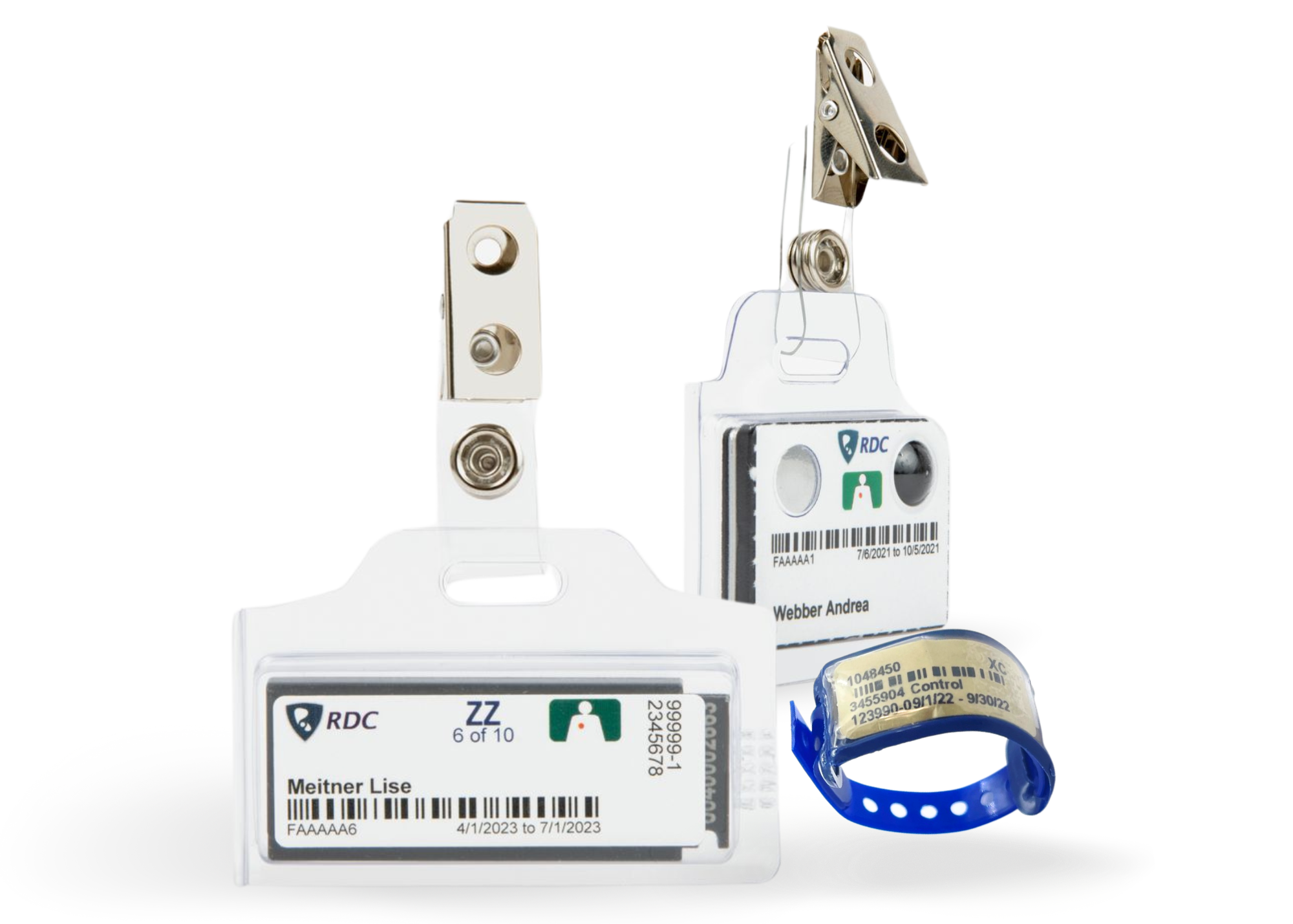What is the Right Badge Service for Me?
Below we break down how to build each portion of your order.

Only Use NVLAP-Accredited Services
Remember: The Nuclear Regulatory Commission (NRC) & State Regulations require organizations to use NVLAP-accredited services to meet your compliance reporting needs.
Radiation Detection Company's monitoring solutions are NVLAP-accredited [Lab Code 100512-0]
A good place to find information about the dosimeters you need is on your Radioactive Materials License.

Determine What You Need In 3 Easy Steps
✅ Step 1: What type of badge do you need?
✅ Step 2: How many badges do you need (and where)?
✅ Step 3: How often - What reporting frequency do you need?
This is determined by the radiation type and range you are exposed to based on the equipment you use.
- OSL (XG): Measures X-Ray and Gamma Radiation (Most Common for Dental & Veterinary)
- TLD (XBG): Measures X-Ray, Beta, and Gamma Radiation (More Common for Medical fields)
- TLD+ (XBGN): Measures X-Ray, Beta, Gamma, and Neutron Radiation (More Common for Medical and Nuclear fields)
Helpful tip: Locate the label on your radiation emitting device to determine what type of radiation is being emitted to make sure you're covered.
.webp?width=652&height=1558&name=vet.png%20(1).webp)
It is recommended that any employee working with or around radiation be monitored for chronic radiation exposure. Federal requirements state that individual personnel monitoring is required if the dose received for any given category is likely to exceed 10% of the Dose Limit in 1 year.
- Individual whole body personnel monitoring is required if the dose received for any given category is likely to exceed 10% of the Dose Limit in 1 year.
- In addition to whole body badges, pregnant employees also need to wear a fetal monitor at the waist.
- Employees that have hand/arm in the field of radiation exposure (such as holding down an animal for an x-ray, or using handheld devices) should use an extremity monitor such as a ring or wrist badge in addition to whole body to monitor extremity exposure.
- Area Monitors are recommended in addition to personnel monitoring to monitor possible radiation exposure to the employees who may not be provided a whole body badge (such as front office staff), or members of the public since it monitors any scatter radiation dose near the equipment. Note that this is NOT your control badge.
- Quarterly reporting frequency is the most common for all badge types (except fetal) unless the state requires more frequent monitoring.
-
Fetal Badges should always be exchanged monthly to receive a dose report.
*Remember to return your badges at the end of each exchange period to get your dose report!

Compliance Confidence
Radiation safety & compliance depend on timely accurate exposure reports - backed by customer support you can trust.
Ready to Get Started?
Sign Up in 5 Minutes.
Get Badges in as Little as 2 Business Days.*
Need More Time? Email Yourself Instructions
*With Rush order delivery option.
© 2024, Radiation Detection Company